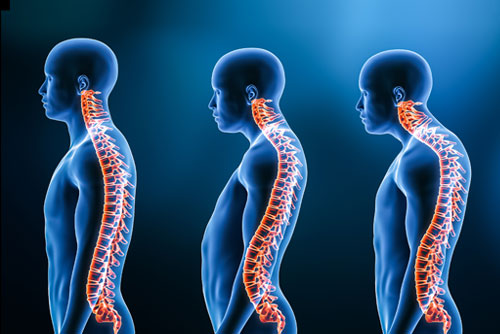Spine Deformity Correction: Restoring Alignment and Function
Spine deformities, such as scoliosis, kyphosis, and other structural abnormalities, can impact a person’s posture, mobility, and overall quality of life. Dr. Vishal Chaudhari specializes in spine deformity correction, offering patients comprehensive evaluation, personalized treatment plans, and advanced surgical techniques to restore spinal alignment and function.
Understanding Spine Deformities
Spine deformities can occur due to various factors, including congenital conditions, growth abnormalities, degenerative changes, or previous spinal surgeries. Common types of spine deformities include:
- Scoliosis: Sideways curvature of the spine, often appearing as an “S” or “C” shape.
- Kyphosis: Excessive forward rounding of the upper back, leading to a hunched posture.
- Lordosis: Exaggerated inward curvature of the lower back, causing the spine to sway excessively.
These deformities can cause pain, limited mobility, breathing difficulties, and cosmetic concerns.
Diagnosis and Evaluation
Dr. Vishal Chaudhari begins by conducting a thorough evaluation to diagnose spine deformities. This may include:
- Medical history review, including family history of spine conditions
- Physical examination to assess posture, range of motion, and neurological function
- Imaging studies such as X-rays, CT scans, or MRI scans to visualize the extent of the deformity and assess spinal alignment
Accurate diagnosis is crucial in determining the appropriate treatment approach for spine deformities.
Treatment Options
- Non-Surgical Management:
- Observation and monitoring for mild deformities that do not require immediate intervention
- Physical therapy and exercise programs to improve strength, flexibility, and posture
- Orthotic devices or bracing to support the spine and manage pain
- Surgical Intervention:
- For severe or progressive deformities, surgical correction may be recommended. Surgical procedures may include:
- Spinal fusion: Joining vertebrae together to stabilize the spine and correct the curvature.
- Osteotomy: Surgically removing or repositioning bone to correct the spinal alignment.
- Instrumentation: Using implants such as rods, screws, or hooks to support and stabilize the spine during fusion.
- For severe or progressive deformities, surgical correction may be recommended. Surgical procedures may include:
Dr. Vishal Chaudhari utilizes advanced surgical techniques, including minimally invasive approaches whenever possible, to achieve optimal outcomes in spine deformity correction.
Rehabilitation and Follow-Up Care
Following spine deformity correction surgery, rehabilitation plays a crucial role in the recovery process. Dr. Chaudhari collaborates with rehabilitation specialists to develop personalized rehabilitation plans that may include physical therapy, occupational therapy, and lifestyle modifications to promote healing, improve function, and prevent future deformities.
Your Path to Spine Health
If you are living with a spine deformity that impacts your daily life, Dr. Vishal Chaudhari can help. Schedule a consultation to receive a comprehensive evaluation, discuss your treatment options, and begin your journey towards restored spinal alignment, improved function, and enhanced quality of life.
Don’t let spine deformities limit your mobility and comfort. Contact us today to schedule your appointment and take the first step towards spine health and well-being.

